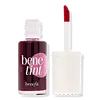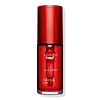What's inside
What's inside
 Key Ingredients
Key Ingredients

 Benefits
Benefits

 Concerns
Concerns

 Ingredients Side-by-side
Ingredients Side-by-side

Water
Skin ConditioningGlycerin
HumectantAloe Barbadensis Leaf Juice
Skin ConditioningRubus Idaeus Fruit Water
MaskingPentylene Glycol
Skin ConditioningPhenoxyethanol
PreservativeParfum
MaskingCaesalpinia Spinosa Gum
Skin ConditioningSodium Citrate
BufferingAmmonium Glycyrrhizate
MaskingCarbomer
Emulsion StabilisingPPG-26-Buteth-26
Skin ConditioningEthylhexylglycerin
Skin ConditioningTamarindus Indica Seed Gum
Emulsion StabilisingPEG-40 Hydrogenated Castor Oil
EmulsifyingSodium Hyaluronate
HumectantSodium Dehydroacetate
PreservativeButylene Glycol
HumectantPotassium Sorbate
PreservativeSodium Benzoate
MaskingCitric Acid
BufferingFurcellaria Lumbricalis Extract
Skin ConditioningCamellia Sinensis Leaf Extract
AntimicrobialLapsana Communis Flower/Leaf/Stem Extract
Skin ConditioningMaris Sal
Skin ConditioningMica
Cosmetic ColorantTin Oxide
AbrasiveSilica
AbrasiveCalcium Aluminum Borosilicate
Calcium Sodium Borosilicate
Synthetic Fluorphlogopite
CI 77891
Cosmetic ColorantCI 77491
Cosmetic ColorantCI 15850
Cosmetic ColorantCI 15985
Cosmetic ColorantCI 42090
Cosmetic ColorantCI 75470
Cosmetic ColorantCI 19140
Cosmetic ColorantCI 45410
Cosmetic ColorantCI 73360
Cosmetic ColorantCI 17200
Cosmetic ColorantCI 45380
Cosmetic ColorantCI 77742
Cosmetic ColorantWater, Glycerin, Aloe Barbadensis Leaf Juice, Rubus Idaeus Fruit Water, Pentylene Glycol, Phenoxyethanol, Parfum, Caesalpinia Spinosa Gum, Sodium Citrate, Ammonium Glycyrrhizate, Carbomer, PPG-26-Buteth-26, Ethylhexylglycerin, Tamarindus Indica Seed Gum, PEG-40 Hydrogenated Castor Oil, Sodium Hyaluronate, Sodium Dehydroacetate, Butylene Glycol, Potassium Sorbate, Sodium Benzoate, Citric Acid, Furcellaria Lumbricalis Extract, Camellia Sinensis Leaf Extract, Lapsana Communis Flower/Leaf/Stem Extract, Maris Sal, Mica, Tin Oxide, Silica, Calcium Aluminum Borosilicate, Calcium Sodium Borosilicate, Synthetic Fluorphlogopite, CI 77891, CI 77491, CI 15850, CI 15985, CI 42090, CI 75470, CI 19140, CI 45410, CI 73360, CI 17200, CI 45380, CI 77742
 Reviews
Reviews

Alternatives
Ingredients Explained
These ingredients are found in both products.
Ingredients higher up in an ingredient list are typically present in a larger amount.
Ci 75470 is a bright-red pigment. It is AKA carmine.
Carmine is derived from insects such as the cochineal beetle. This ingredient has been used as a natural dye for over 2000 years.
Parfum is a catch-all term for an ingredient or more that is used to give a scent to products.
Also called "fragrance", this ingredient can be a blend of hundreds of chemicals or plant oils. This means every product with "fragrance" or "parfum" in the ingredients list is a different mixture.
For instance, Habanolide is a proprietary trade name for a specific aroma chemical. When used as a fragrance ingredient in cosmetics, most aroma chemicals fall under the broad labeling category of “FRAGRANCE” or “PARFUM” according to EU and US regulations.
The term 'parfum' or 'fragrance' is not regulated in many countries. In many cases, it is up to the brand to define this term.
For instance, many brands choose to label themselves as "fragrance-free" because they are not using synthetic fragrances. However, their products may still contain ingredients such as essential oils that are considered a fragrance by INCI standards.
One example is Calendula flower extract. Calendula is an essential oil that still imparts a scent or 'fragrance'.
Depending on the blend, the ingredients in the mixture can cause allergies and sensitivities on the skin. Some ingredients that are known EU allergens include linalool and citronellol.
Parfum can also be used to mask or cover an unpleasant scent.
The bottom line is: not all fragrances/parfum/ingredients are created equally. If you are worried about fragrances, we recommend taking a closer look at an ingredient. And of course, we always recommend speaking with a professional.
Learn more about ParfumPhenoxyethanol is a preservative that has germicide, antimicrobial, and aromatic properties. Studies show that phenoxyethanol can prevent microbial growth. By itself, it has a scent that is similar to that of a rose.
It's often used in formulations along with Caprylyl Glycol to preserve the shelf life of products.
Water. It's the most common cosmetic ingredient of all. You'll usually see it at the top of ingredient lists, meaning that it makes up the largest part of the product.
So why is it so popular? Water most often acts as a solvent - this means that it helps dissolve other ingredients into the formulation.
You'll also recognize water as that liquid we all need to stay alive. If you see this, drink a glass of water. Stay hydrated!
Learn more about Water